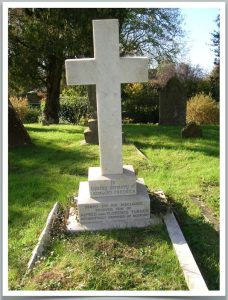Royal Air Force

Leonard Frederick Turner was born on 10 January 1898 at Campden, Mickelton, Gloucestershire.
He was the son of Alfred Samuel Turner, a hurdle maker on a farm, and his wife Florence Mary Turner.
The couple had three children, one of whom was deceased by the time of the 1911 Census when they lived at Mickleton.
Leonard appears to have followed his father in working on a farm and becoming a carpenter.
He joined the Royal Flying Corps (RFC) on 18 May 1916, when aged 18 years and four months and he served as a carpenter. In his Service Record (National Archives AIR 79/290/28840) his religion is noted as ‘Salvationist’.
Little is known of his service during the Great War and whether this was undertaken at Home or overseas.
His initial rank of Air Mechanic Second Class became Air Mechanic Third Class, when the RFC was absorbed into the Royal Air Force (RAF) on 1 April 1918.
His Service Record gives much more detail of his post Great War service. Having been reclassified as Aircraftsman 2, as a carpenter, on 1 January 1919, he served with the North Russia Expeditionary Force from 9 April to 4 June 1919.
He was then located elsewhere in Russia (Dirna?) before being posted to HMS Pegasus, an aircraft/seaplane carrier, on 20 June 1919.
This vessel was based at Archangel. He appears to have served in Northern Russia until 11 September 1919 and after (presumably) returning to the UK (and leave?) he joined Halton Camp, Buckinghamshire on 22 November 1919, followed by Uxbridge, Middlesex on 22 June 1920 and then to the Air Force Reserve on 22 July 1920.
From reasons unknown he was recalled from the RAF Reserve on 9 April 1921 and posted to Henlow on 12 April 1921.
Leonard died on 15 May 1921, drowned as a result of a boating accident at Bedford, age 23.
It would appear that between the date of the 1911 Census and his death his family had moved from Mickleton to The Lodge, Wyck Rissington, as it is in the parish churchyard at Wyck Rissington that he was laid to rest.
A private white stone cross marks his grave.
Research by Graham Adams 31 March 2014
